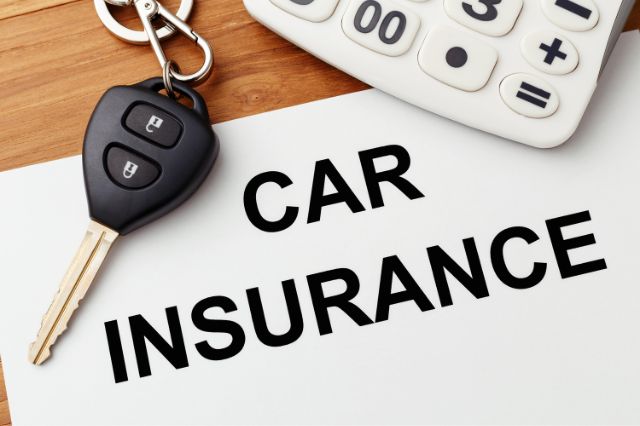How Much Car Insurance Do You Really Need?

Attention car owners!
Do you know that car insurance is a must-have for responsible individuals like yourself?
It is not merely an option but a crucial element that safeguards you from potential financial ruin in the unfortunate event of an accident.
But how do you know how much car insurance you really need? Don’t worry!
In this compelling article, we unlock the secrets to determining the optimal level of car insurance coverage tailored to your unique circumstances.
Don’t delay any longer! Take control of your car ownership journey by reading this complete guide for your car insurance.
Let’s start now!
1. State Minimum Requirements
The first thing you need to be aware of is your state’s minimum requirements for car insurance coverage.
Every state has its own regulations for car insurance, including minimum coverage requirements. Liability coverage is a mandatory requirement that will effectively cover all damages and injuries incurred as a result of an accident.
While meeting the minimum requirements is legally mandatory, it may not provide adequate protection in the event of a severe accident.
Minimum coverage often needs to be improved when it comes to covering substantial medical bills or damages to expensive vehicles. Therefore, it’s essential to consider additional coverage options to safeguard your financial well-being.
2. Assessing Your Needs
To determine the appropriate level of car insurance for your needs, you should consider several factors:
Value of Your Vehicle: The value of your vehicle plays a significant role in deciding the amount of coverage you need. Comprehensive and collision coverage becomes essential if you have a new or expensive car. These coverages help repair or replace your vehicle in case of damage or theft.
Personal Finances: Assess your finances to determine how much you can pay out of pocket for accidents. If you cannot afford substantial expenses, it’s wise to opt for higher coverage limits and additional protection, such as uninsured/underinsured motorist coverage.
Risk Factors: Consider the driving conditions in your area and assess your risk factors. If you live in a densely populated city with heavy traffic, your chances of being involved in an accident are higher. Additionally, you should increase your coverage if you frequently commute long distances or have a history of accidents.
Medical Coverage: Evaluate your health insurance coverage and determine if it provides adequate protection in the event of an accident. If you have limited health insurance or high deductibles, consider getting personal injury protection (PIP) coverage or medical payments coverage. This can help cover medical expenses for you and your passengers.
Assets and Liabilities: Take into account your assets and liabilities. If you have significant assets, it is advisable to obtain higher liability coverage to safeguard against potential lawsuits for damages that surpass your insurance limits.
3. Choosing the Right Coverage Types
Now that you have assessed your needs let’s delve into the various coverage types you can choose from:
Liability Coverage: This is the most basic and mandatory coverage that pays for injuries or damages you cause to others. It includes bodily injury liability (BIL) and property damage liability (PDL) coverage.
Collision Coverage: This type of coverage is great because it’ll take care of any damages to your car caused by a collision, no matter who’s responsible.
Comprehensive Coverage: Comprehensive coverage protects against damages to your vehicle caused by non-collision incidents such as theft, vandalism, fire, or natural disasters.
Uninsured/Underinsured Motorist Coverage: This coverage protects you if you are involved in an accident with a driver who doesn’t have insurance or has insufficient coverage.
Personal Injury Protection (PIP) Coverage: This coverage provides financial protection for medical expenses, lost wages, and related costs incurred by you and your passengers, regardless of responsibility for the incident.
Medical Payments (MedPay) Coverage: Did you know that with MedPay coverage, you don’t have to worry about who’s at fault in an accident when it comes to paying your medical expenses? It’s true! MedPay coverage has got you covered.
Gap Insurance: If you’re leasing or financing your vehicle, gap insurance can help cover the difference between your car’s actual cash value and the amount you owe on your loan or lease.
4. Consulting with an Insurance Professional
Understanding car insurance coverage can be a difficult task because there are many things to consider.
It’s a good idea to talk to an insurance expert who knows a lot about insurance. They can understand what you need and give you helpful advice.
An expert can look at all the risks you might face, explain the differences between different insurance options, and create a policy just for you that fits your needs and budget. With their help, you can feel confident and not worry about car insurance.
Conclusion
When it comes to car insurance, it’s crucial to strike a balance between meeting legal requirements and protecting your financial well-being.
Understanding your personal needs, assessing risk factors, and evaluating your budget are crucial elements in determining the right level of coverage.
Remember to compare quotes from multiple insurance providers to find the best policy that meets your requirements. By choosing appropriate coverage, you can have peace of mind knowing that you are adequately protected on the road.
Thanks for reading this guide for car insurance!
Do you have any questions related to car insurance? Please leave your comments in the box below, and we will respond promptly to each of your inquiries.
